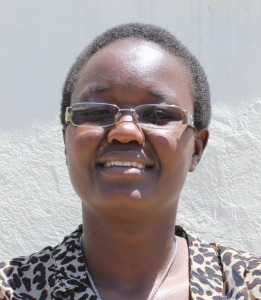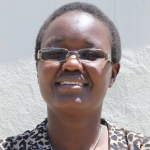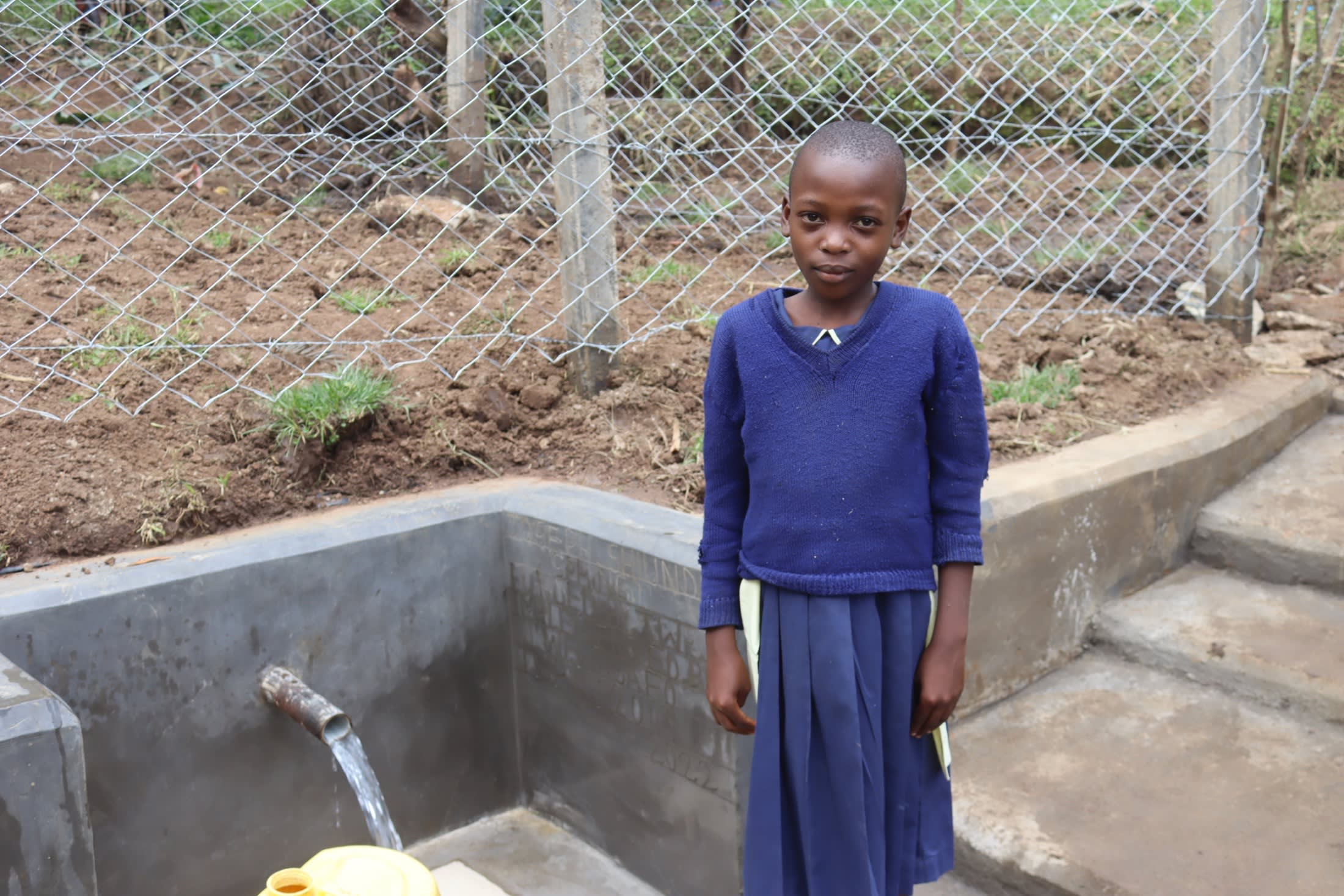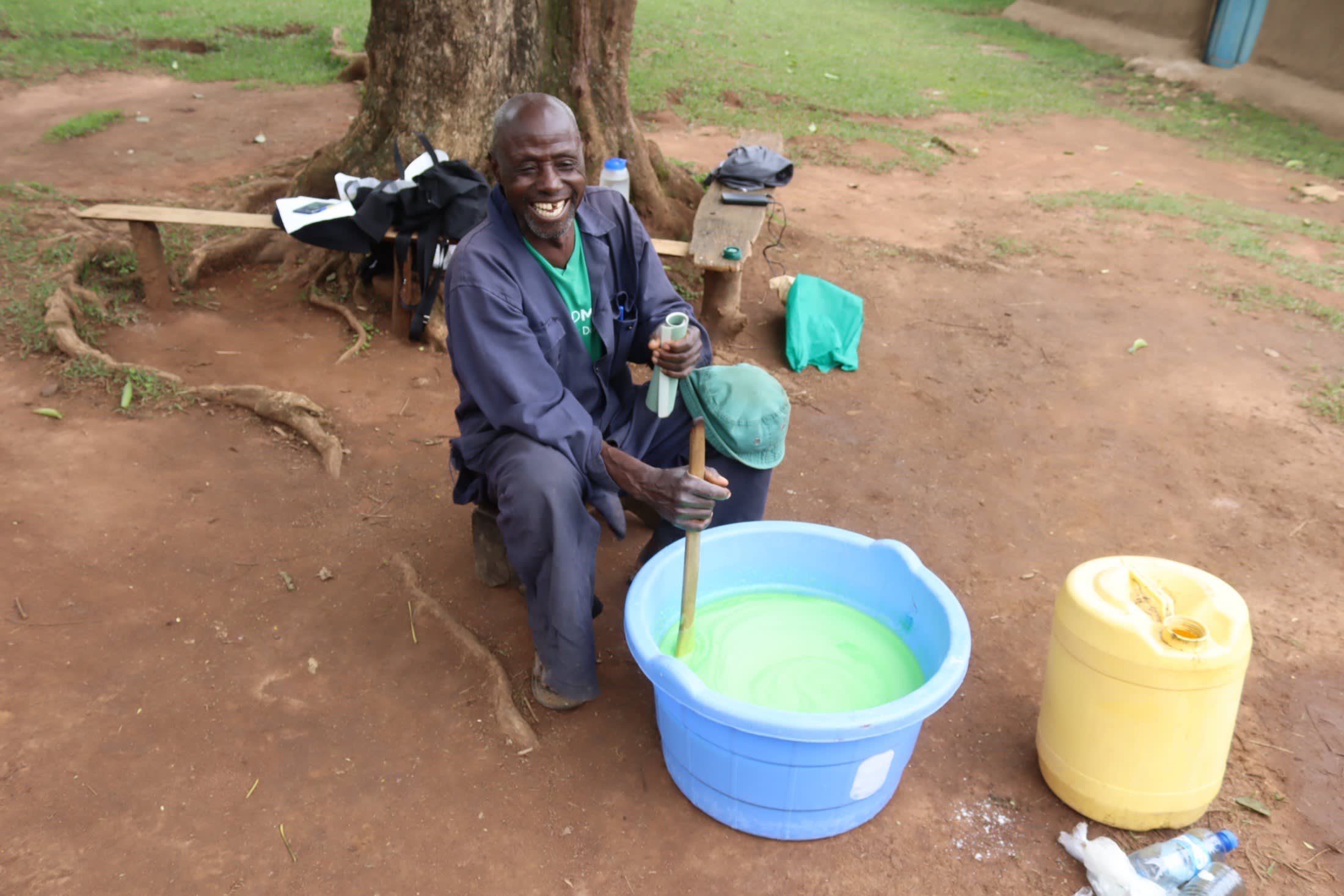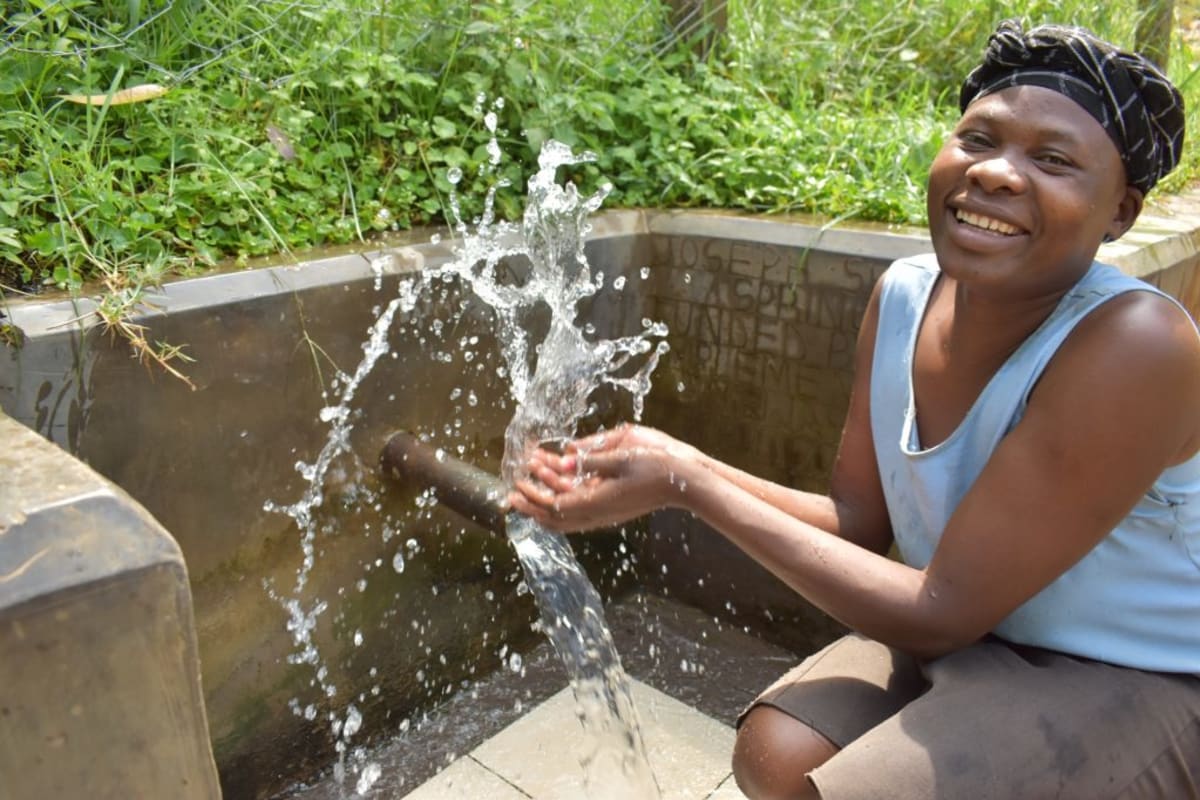The 250 community members of Chevoso wake up as early as 6am to fetch water because they believe this is the only time the water from Joseph Shiundu Spring is clean for consumption. It may look clean, but it's not. It is contaminated, and community members constantly suffer from water-related illnesses like typhoid, cholera, and persistent coughs.
45-year-old farmer Joseph Shiundu (seen below) shared, "This water source has been the source of our sorrows because we are always sick, and this has made us spend a lot of money in hospitals. I believe the water source has made us poor because we spend all our earnings in hospitals all the time than doing other developments."
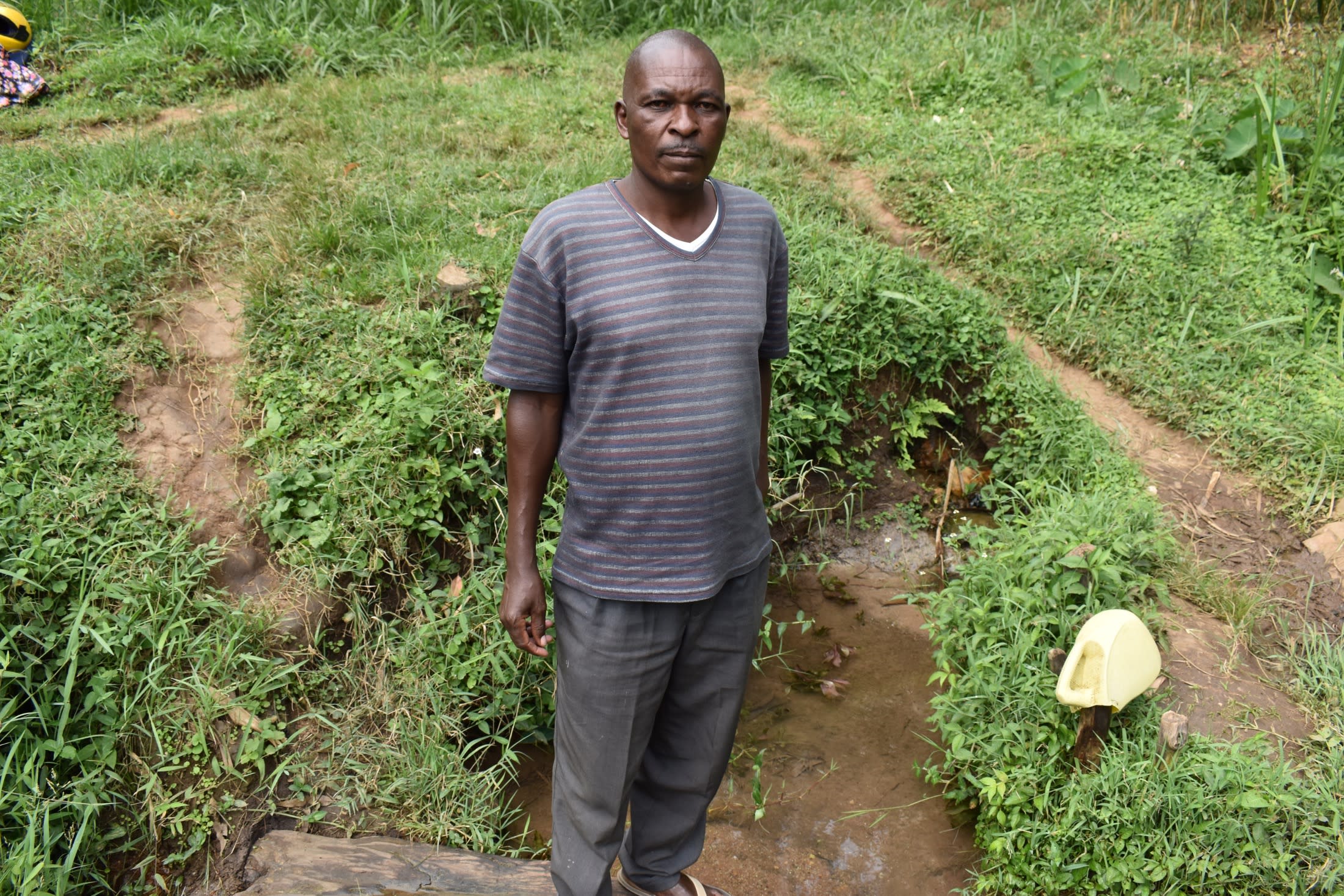
The water has algae growing in it and is open to all types of contaminants. Access to the water source is risky because it is bushy and dirty and becomes slippery when it rains, especially for young children and the elderly who can easily slip and fall, injuring themselves.

"I fear fetching water from the spring because I've injured myself not once but several times. The stand that we use to support ourselves while fetching water is slippery because it's wooden and it has soaked water. Anytime I stand with my container, I slide, and my leg is hurt, and I fall inside the water, which is risky and dangerous," said Chantel S. (in the photo above), 8.
To collect water, people must squat down on a board on the water's edge and collect water using a scooping jug. It is a strenuous task that drains their time and energy and forces them to spend more time fetching water than doing other things.
By protecting the spring, the community members of Chevoso will be able to spend their time accomplishing other things besides collecting water so they can break out of the cycle of poverty they currently experience.
What We Can Do:
Spring Protection
Protecting the spring will help provide access to cleaner and safer water and reduce the time people have to spend to fetch it. Construction will keep surface runoff and other contaminants out of the water. With the community's high involvement in the process, there should be a good sense of responsibility and ownership for the new clean water source.
Fetching water is a task predominantly carried out by women and young girls. Protecting the spring and offering training and support will, therefore, help empower the female members of the community by freeing up more of their time and energy to engage and invest in income-generating activities and their education.
Training on Health, Hygiene, COVID-19, and More
To hold trainings during the pandemic, we work closely with both community leaders and the local government to approve small groups to attend training. We ask community leaders to invite a select yet representative group of people to attend training who will then act as ambassadors to the rest of the community to share what they learn. We also communicate our expectations of physical distancing and wearing masks for all who choose to attend.
The training will focus on improved hygiene, health, and sanitation habits in this community. We will also have a dedicated session on COVID-19 symptoms, transmission routes, and prevention best practices.
With the community's input, we will identify key leverage points where they can alter their practices at the personal, household, and community levels to affect change. This training will help to ensure participants have the knowledge they need about healthy practices and their importance to make the most of their water point as soon as water is flowing.
Our team of facilitators will use a variety of methods to train community members. Some of these methods include participatory hygiene and sanitation transformation, asset-based community development, group discussions, handouts, and demonstrations at the spring.
One of the most important issues we plan to cover is the handling, storage, and treatment of water. Having a clean water source will be extremely helpful, but it is useless if water gets contaminated by the time it is consumed. We and the community strongly believe that all of these components will work together to improve living standards here, which will help to unlock the potential for these community members to live better, healthier lives.
We will then conduct a small series of follow-up trainings before transitioning to our regularly scheduled support visits throughout the year.
Training will result in the formation of a water user committee, elected by their peers, that will oversee the operations and maintenance of the spring. The committee will enforce proper behavior around the spring and delegate tasks that will help preserve the site, such as building a fence and digging proper drainage channels. The fence will keep out destructive animals and unwanted waste, and the drainage will keep the area's mosquito population at a minimum.

 Protected Spring
Protected Spring
 Rehabilitation Project
Rehabilitation Project










